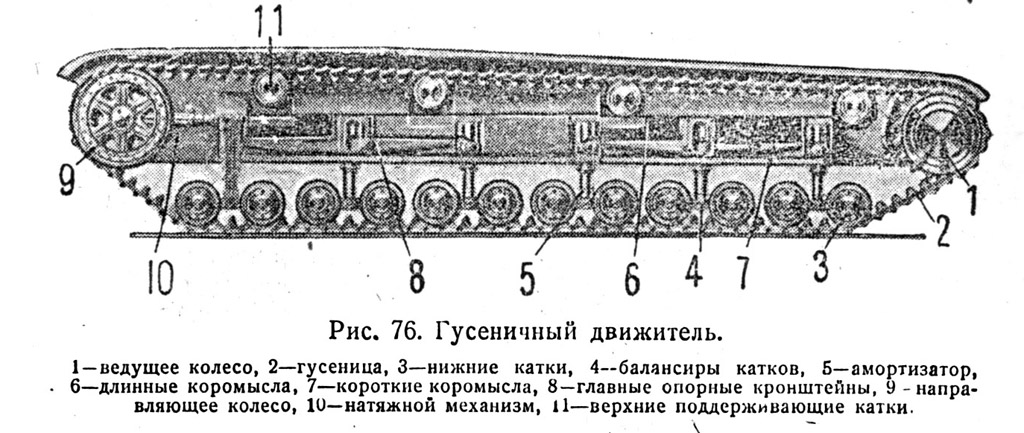Source: http://yuripasholok.livejournal.com/2825352.html
Hello everyone,
Yuri Pasholok posted something quite interesting not long ago – he demonstrated that the origins of the T-28 suspension actually started with… Krupp. Check this out. It is well known, that since Soviet Russia and Germany were allies before the war, German tanks were tested on a polygon near Kazan. These tests included the Grosstraktor prototoype vehicles (one of which was made by Krupp).
Russian engineers of course weren’t blind and in the internal Russian correspondence, the T-28 suspension is referred to as “Krupp suspension”. To compare, this is the T-28 suspension:
And this is the Krupp Grosstraktor, it’s “grandfather”:
Yuri Pasholok states that the Russian engineers in this case copied only the suspension, but not some other details, such as the roadwheel design and as a result, T-28 – although stable – was not capable of going as fast on the road as the German design, a fact that is pointed out in the abovementioned correspondence.



‘Polygon’ isn’t used in English in the sense you intended. The English term is firing/shooting range.
Or possibly proving ground.
Exactly!
Ye I always forget and use Czech/Russian terms. But I am sure everyone understands anyway :)
Actually, no. Without Leedar mentioning it up there I would have had no idea that the ‘polygon’ in the text was a reference to a shooting range. I thought it maybe was a distinctively shaped area covered in concrete (which shapes resembling polygons), thereby being capable of being a testing ground that remains the same over time or such.
Those who know a language in which “polygon” is a synonym to “shooting range” understand. In Latvian it can be used like that
That would be none of those I’m even passingly familiar with.
…how the Hell did a geometry term end up with that meaning in Central/Eastern European languages anyway?
Armies work in mysterious ways. It is not only a shooting range, it’s also used for any area where a certain marked-out, controlled environment/space is used for practice of movement or general drills. In Croatian it’s sometimes used for the part of driving lessons which are done out of general traffic.
My guess is that it was named so due to the shape the obstacle course paths used in army training have.
At this point I’d be almost willing to bet it originated in the often rather irregular shapes of the zones reserved for military shooting ranges and what have you…
In slovenian it’s “poligon” too but in English a polygon is a geometrical term. But ye we understand what you’re getting at ;)
As a slovenian, i also understood what SS meant. :)
tbh that sentence completely confused me until I read comments…
yep, very confusing to us native English-speakers
Makes only sense to use the lend lease stuff to improve their own designs.
Doesn’t work every time though, for example when they first recieved it, the Russians bashed M3 Lee to kingdom come.
To be fair it WAS a stopgap design. And still better than, say, T-28 though dunno if the Soviets even had many of *those* left by the time the first M3s hit the field – beggars can’t be choosers.
By the time the M3 Lee was introduced to the Soviets, the T-28 design was a decade old and they already had a great number of T-34 and KV-1 tanks so its understandable why they hated on the M3 Lee
Point being they still had a fair pile of T-28s in active service at the start of Barbarossa with the next-gen nasties only beginning to be fielded in numbers. Beats me how many still survived by the time the L-L shipments started rolling in.
And, yes, it was blatantly inferior to their domestic standbys in just about any respect one might care to name. Still better than nothing and, well, considering the hilariously feeble design it was built on…
there is nothing new under the sun…
“Such as the roadwheel design and as a result, T-28 – although stable – was not capable of going as fast on the road as the German design, a fact that is pointed out in the abovementioned correspondence.”
Wait… it wasn’t capable of going as fast on the road as the German design?..
Ingame, the T-28 can get to it’s 44(i think)speed limit really fast… So is the speed over-buffed ingame?
PS: is the new ASAP up yet SS? :)
That’s in the context of around, what, 1930 or so (the cooperative research and testing stopped rather abruptly in ’33 for obvious reasons). T-28 was manufactured, used and improved for almost a decade after the Grosstraktor was dead and buried; debugging “external” bits like the suspension and its component parts oughta been among the easiest modifications.
44 km/h was the maximum speed achievable with the T-28 transmission. In realty, mass produced T-28 only had access to it’s stock engine, which has half of the horsepower of the top engine (which was a prototype, IIRC). That’s why T-28 flies with the top engine, while being sluggish when stock. I think the Winter war config would be: 76 mm gun from T-46, stock engine, tracks and turret.
Is there any option to send ss my proposition of article (maybe not proposition but ready article) about T-34-57
“FTR Contacts”.
http://ftr.wot-news.com/ftr-staff-contact/